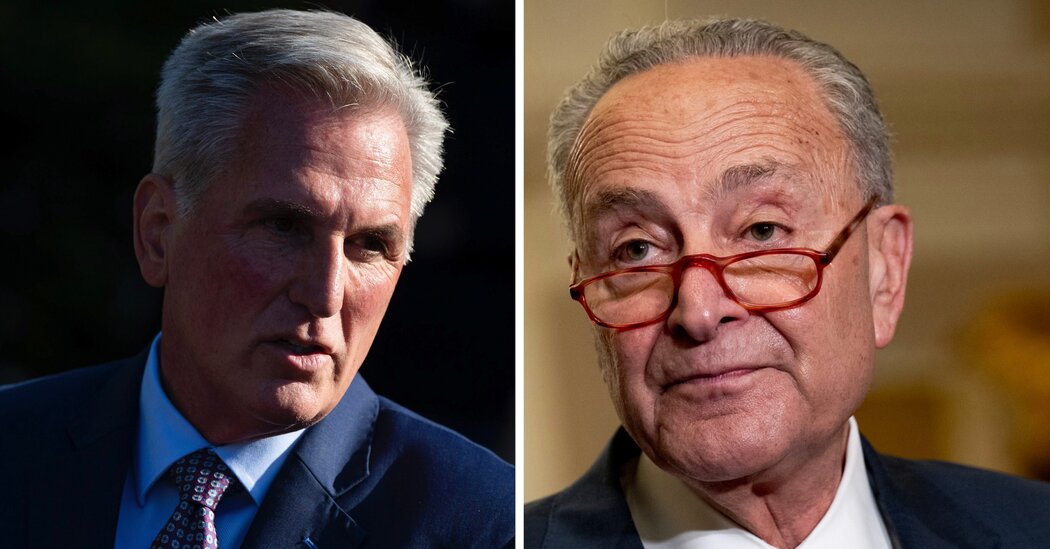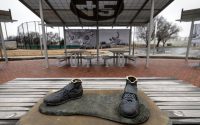Judge in Sept. 11 Case Visits Former C.I.A. Black Site
In a first, a military judge at Guantánamo Bay on Friday crossed into the security zone containing the wartime prison and inspected a former C.I.A. “black site” facility at the center of a dispute over the taint of torture in the Sept. 11, 2001, case.
It was a noteworthy moment in the arc of the two-decade history of the Guantánamo trials. No war court judge had before made the five-mile trip to look at the detention operations, where the military maintains the only known, still-intact remnant of the network of overseas prisons that the C.I.A. operated from 2002 to 2009.
But Col. Matthew N. McCall, the judge, is edging toward a decision on whether the accused mastermind of the attacks, Khalid Shaikh Mohammed, and three co-defendants voluntarily confessed to conspiring in the attacks in their fourth year of detention, under questioning by F.B.I. agents at Guantánamo prison.
And the prison site he visited, called Camp Echo, has played a central but covert role in the case. From 2003 to 2004, the C.I.A. kept five prized prisoners there, near the prison facilities but out of reach of the International Red Cross. It was part of its secret overseas network that hid about 120 “high-value detainees” in such far-flung sites as Afghanistan, Thailand and Poland.
In April 2004, the agency closed the black site at Guantánamo and moved those five prisoners to other secret sites, on the advice of the Justice Department, to avoid a looming U.S. Supreme Court decision later that year that granted detainees at U.S.-controlled Guantánamo Bay access to lawyers.
After President George W. Bush ordered Mr. Mohammed and 13 other C.I.A. prisoners be moved to Guantánamo in September 2006 to face trial, federal agents used the same portion of Camp Echo to obtain ostensibly lawful confessions by what the prosecutors called “clean teams.”
At issue now is whether statements the men made in 2007 are admissible at the eventual trial of Mr. Mohammed and the three men who are accused of being his accomplices in helping the 19 hijackers who took part in the Sept. 11 attacks.
Prosecutors consider those interrogations the most critical evidence in the capital case that has been mired in preliminary hearings since 2012. They argue that the statements were voluntary, and so would be admissible.
Defense lawyers argue that, by 2007, Mr. Mohammed and the others were conditioned through years of torture, solitary confinement and constant C.I.A. debriefings that they were helpless but to answer questions on demand.
Military judges have generally stayed away from the detainee operation, which currently holds 30 prisoners. Judges have summoned commanders to court to answer questions and lawyers have provided photographs of prison conditions as court evidence.
Lawyers for one of the defendants, Ammar al Baluchi, proposed the field trip to the judge, who spent less than 20 minutes inspecting the compound of wooden huts containing steel cells that are split in two.
One half has a metal pallet for a sleeping mat, shower, sink and toilet, also made of metal, Alka Pradhan, Mr. Baluchi’s lawyer, said in court Friday to orient the judge before his visit. The other half was set up as an interrogation room and has linoleum and a bolt in the floor, where a detainee’s ankle is shackled during legal meetings still held there.
“On information and belief,” she said, there also was “a shackle point on the ceiling” for a time. But she did not say when.
In one portion of Camp Echo, where reporters have visited, the wooden huts have windows. But huts in the portion where the C.I.A. prisoners were held and interrogated have no natural light — unless the outer door is left open.
Ms. Pradhan said the tour was meant to support the defense team’s argument that Mr. Baluchi considered the interrogation in 2007 to be another stop in his odyssey of torture through the black sites. Interrogators testified that they shared meals from McDonald’s and chatted with him.
But Ms. Pradhan said that merely being there, in a site similar to earlier black sites where he was beaten, shackled nude and deprived of sleep, “triggered an intense fear in him” that left him no choice but to tell his interrogators what they wanted to hear.
Colonel McCall left his black robe at the courthouse and drove himself and an aide to the checkpoint that controls access to the prison complex, a 15-minute ride past an Irish pub, McDonald’s and a bowling alley that serves the base of about 5,000 residents — most of whom have never been allowed inside the prison zone.
In 2019, the U.S. government declassified the fact that a portion of Camp Echo had been a black site at Guantánamo, but defense lawyers had been aware of that national security secret for years. Three defendants in the capital cases told their counsel that they had been there before.
One of them, Abd al-Rahim al-Nashiri, is accused of orchestrating Al Qaeda’s suicide bombing of the U.S.S. Cole destroyer off Yemen on Oct. 12, 2000, in the longest-running death-penalty case at Guantánamo Bay.
Last year, the military judge in that case, Col. Lanny J. Acosta Jr., threw out the statements Mr. Nashiri made to federal interrogations at Echo in 2007, as derived from his years of torture by the C.I.A.
“The F.B.I. interview in 2007 actually occurred in the same complex — and perhaps even the same cell,” he wrote.


